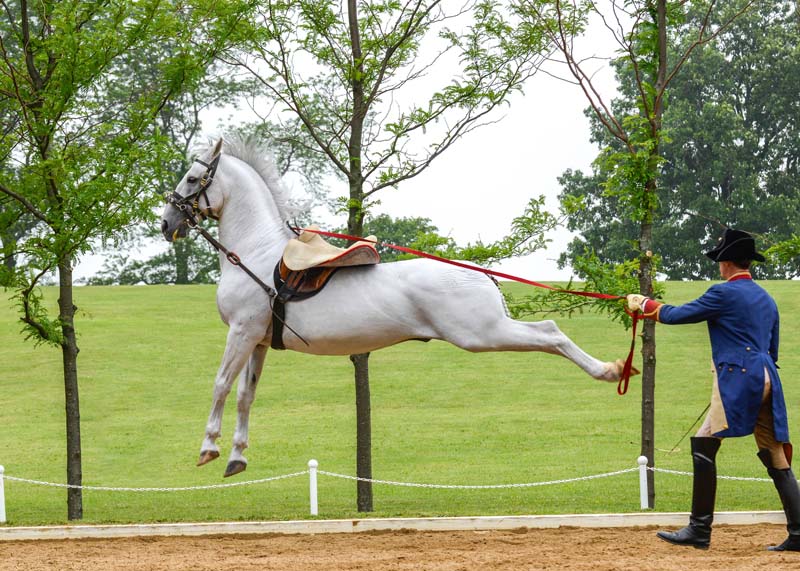The Lipizzan horse breed is one of the most well-known in the world. Although it faced the risk of extinction many times, these royal horses managed to survive through war to still impress at the highest levels of dressage in the Spanish Riding School of Vienna.
The Lipizzan Horse Breed
The Lipizzan (sometimes Lipizzaner) is royal since its origins. The Habsburg family, then ruling both Austria and Spain, derived this breed from their need for light and agile riding and war horses. They founded two studs, one in Kladrub and one in Lipica (located in modern-day Slovenia).
In these studs, Spanish and Arabian stock, as well as Barb, gave origin to the Lipizzan horse breed. The Neapolitan, an Italian breed, also helped in the creation of the Lipizzan. These horses are now extinct, but the Neapolitano lineages still exist in the modern Lipizzan’s foundation stock.
It was the Spanish Riding School that cemented the Lipizzan horse breed’s reputation, though. Founded in 1572 and set in Vienna, Austria, it is the oldest, still-existing riding school in the world. Only Lipizzan stallions perform at the Spanish Riding School. The current hall, where the school still operates, was built in 1729.
In 1920, the Austrian government consolidated breeding at Piber, which would become the Piber Federal Stud. This stud existed since 1798 but became dedicated to the Lipizzans in 1920. The Piber Federal Stud breeds the stallions used by the Spanish Riding School to this day.

The Lipizzan horse breed is popular for its “airs above the ground” style of dressage.
The Lipizzaner faced near-extinction several times due to war. World War II saw an incredible cooperation between Alois Podhajsky, head of the Spanish Riding School, and the American general George S. Patton.
The latter, an avid horseman, cooperated with Podhajsky to move the horses from Hostau, Czechoslovakia, where the Nazi high command had moved them, across the German border, to Kotztinz, in the so-called Operation Cowboy.
This operation saved 1,200 horses, including over 300 Lipizzaners. The horses only returned to Piber in 1952, well after the war.
Today, the Lipizzan International Federation cooperates across national borders to keep breed standards and preserve the breed. Currently, there are around 10,000 Lipizzan horses in the world.
You can see the Spanish Riding School stallions perform at the Wembley Arena, here:
Breed Stats
Height: 14.2 – 15.2 hh. Some in the driving and carriage lineages can reach 16.1 hh.
Colour: White (All true Lipizzan horses are white)
Conformation: The Lipizzan is a Baroque-style horse, with a wide chest and broad croup, as well as muscular shoulders. It has a long head, a straight or slightly convex profile, and a thick neck. The body is muscular, with powerful hindquarters. They have a high, well-set tail and rounded, broad joints with small but hard feet.
Uses: While the Lipizzan can be used for driving and under saddle, their characteristic use is in classical dressage — in special, the “airs above the ground” level of dressage. They are especially famous for the Spanish Riding School of Vienna, which only uses stallions in their demonstrations.
Source: horseyhooves.com








